Students looking for the Bridges in Mathematics Kindergarten Home Connections Answer Key Unit 7 Weight & Place Value can find a better approach to solve the problems.
Bridges in Mathematics Kindergarten Home Connections Answer Key Unit 7
Bridges in Mathematics Kindergarten Home Connections Unit 7 Module 1 Session2 Answer Key
How Many in a Pound?
Note to Families
Here’s an opportunity to give your child something productive to do at the grocery store. Find the scales in the produce section and weigh the items pictured on the record sheet.
Materials
- How Many in a Pound?
- pencil
Instructions
1. Take the record sheet on page 2 and a pencil to the grocery store.
2. Find the scales in the produce (vegetables and fruits) section.
3. Find the onions. There might be more than one kind or size; pick just one kind.
4. Guess how many onions it will take to weigh 1 pound. (Remember, that’s how much the sack of potatoes weighed at school.)
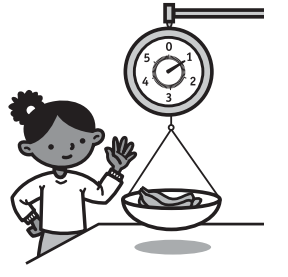
5. Put the onions on the scale one at a time and stop when the scale shows about 1 pound. Record the number of onions on the record sheet. Put the onions back.
6. Continue gathering and weighing the items pictured and record how many it takes of each to weigh about a pound.
7. CHALLENGE Help the adults you are with to weigh some of the items they need. For example, they might need 2 pounds of oranges or half a pound of broccoli.
8. At home, complete the worksheet on page 3 and return it to your teacher.
Take this record sheet to the grocery store. Find the scales in the produce section and weigh the items pictured. Record how many of each it takes to weigh about a pound.

Answer:
After weighing the items to a pound of weight in grocery store, the below number of items or pieces I get for every item.
Onions – 6
Potatoes – 5
Carrots – 7
Bananas – 6
Apples – 4
Lemons – 10
Make a circle around the objects that would be heavier than a potato. Make a box around the ones that would be lighter than a potato.
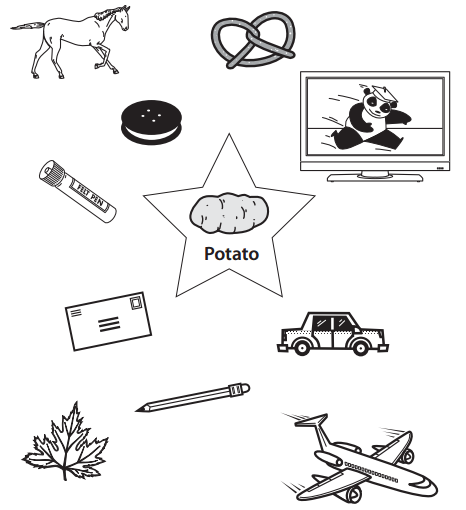
How many of the objects are heavier than a potato? ________________
How many of the objects are lighter than a potato? ________________
Answer:

Explanation:
Six objects are heavier than a potato.
Three objects are lighter than a potato.
Bridges in Mathematics Kindergarten Home Connections Unit 7 Module 1 Session 5 Answer Key
Fill It to Five
Note to Families
Your child has played this game in school. Students practice adding numbers to 5 and writing equations.
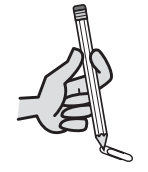
Materials
- Fill It to Five,
- pencil and paperclip (for the spinner)
Instructions
1. Spin the spinner and add the number to 5.
Child I spun 4.
Adult How much is 5 and 4 more?
Child I know it’s 5… 6, 7, 8, 9.
2. Starting with the bottom box in the appropriate column, write an equation to represent the sum.
Adult Where should you write the equation?
Child Here. (Points to the bottom box of the column labeled “5 + 4.”)
I’m going to write 5 + 4 = 9.
3. Keep spinning and writing equations until one column is filled.
4.Once the game is complete, think about these questions:
- Which equation did I write the most? How many times?
- Which equation did I write the least? How many times?”
5. CHALLENGE Once your child has determined the sum, ask:
- “How many more to make 10?” or “How many more to make 20?”
- “What is minus ?” (For example, if the child spins 4, she writes the equation 5 + 4 = 9. Then ask, “What is 9 minus 4?” and “What is 9 minus 5?”)
6. Complete the worksheet on page 3 and return it to your teacher.

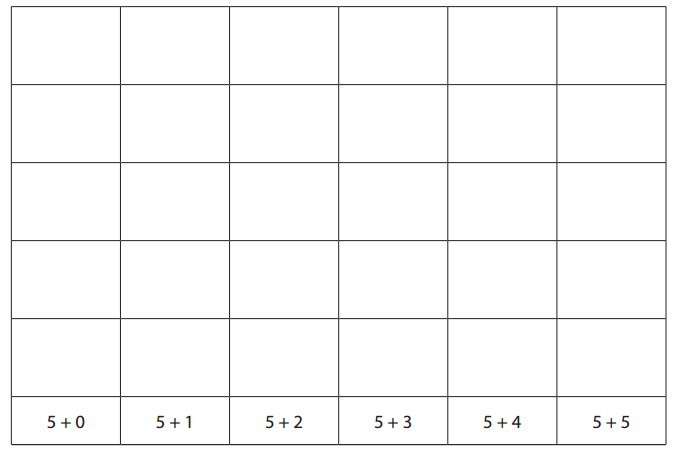
Add (+) or subtract (-). Use counters, ten-frames, or draw pictures if you wish.
Question 1.
Solve each addition problem.

Answer:

Explanation:
Perform addition operation on above given numbers.
Add 4 with 1 the sum is 5.
Add 5 with 0 the sum is 5.
Add 0 with 5 the sum is 5.
Add 3 with 2 the sum is 5.
Add 1 with 4 the sum is 5.
Add 2 with 3 the sum is 5.
Question 2.
Solve each subtraction equation.
5 – 0 = _____________
5 – 4 = _____________
5 – 2 = ______________
5 – 3 = ______________
5 – 5 = ______________
5 – 1 = ______________
Answer:
5 – 0 = 5
5 – 4 = 1
5 – 2 = 3
5 – 3 = 2
5 – 5 = 0
5 – 1 = 4
Explanation:
Perform subtraction operation on above given equations.
Subtract 0 from 5 the difference is 5.
Subtract 4 from 5 the difference is 1.
Subtract 2 from 5 the difference is 3.
Subtract 3 from 5 the difference is 2.
Subtract 5 from 5 the difference is 0.
Subtract 1 from 5 the difference is 4.
Question 3.
CHALLENGE Add (+) or subtract (-).
5 + 5 = ______________
____________ = 5 + 3
10 – 4 = _____________
___________ = 10 – 2
Answer:
5 + 5 = 10
8 = 5 + 3
10 – 4 = 6
8 = 10 – 2
Explanation:
Perform addition and subtraction operations on above given numbers.
Add 5 with 5 the sum is equal to 10.
Add 5 with 3 the sum is equal to 8.
Subtract 4 from 10 the difference is equal to 6.
Subtract 2 from 10 the difference is equal to 8.
Bridges in Mathematics Kindergarten Home Connections Unit 7 Module 2 Session 2 Answer Key
Make It Five
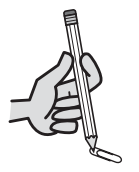
Materials
- Make It Five, pages 1-4
- 2 crayons of different colors
- pencil and paperclip (for use as a spinner)
Instructions
1. Players write their names on the record sheet on page 3, one above the top section and one above the bottom section.
2. Player 1 uses the spinner on the next page to spin, and finds the five-frame next to the shape indicated on the record sheet.
- Color in the number of boxes with one color crayon.
- Write the number in the first space of the empty equation next to the five-frame. (For example, if you roll “2 cylinders,” color in two boxes of the cylinder five- frame and then write the number 2 in the first space of the empty equation line.)
3. Player 2 takes a turn, following the directions in Step 2.
4. Players continue taking turns spinning the spinner and coloring in the number of boxes indicated.
- Once you have used one crayon color in a five-frame, use the second color to fill in the rest of the boxes.
- When a five-frame is complete, finish the equation.
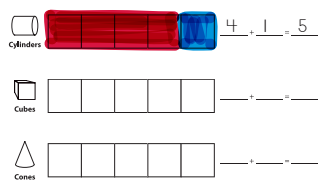
5. Play until both players have completed all three equations.
6. CHALLENGE After the student has colored in some boxes of the five-frame, cover up the five-frame and ask, “How many more to make 5?”
7. CHALLENGE Without the five-frames visible, ask the following questions;
- What goes with 2 to make 5?
- What goes with 4 to make 5?
- What goes with 3 to make 5?
- What goes with 0 to make 5?
- What goes with 1 to make 5?
- What goes with 5 to make 5?
8. Complete the worksheet on page 4 and return it to your teacher.
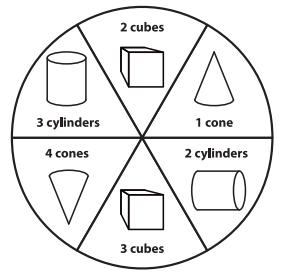
Answer:
Player 1 ______________
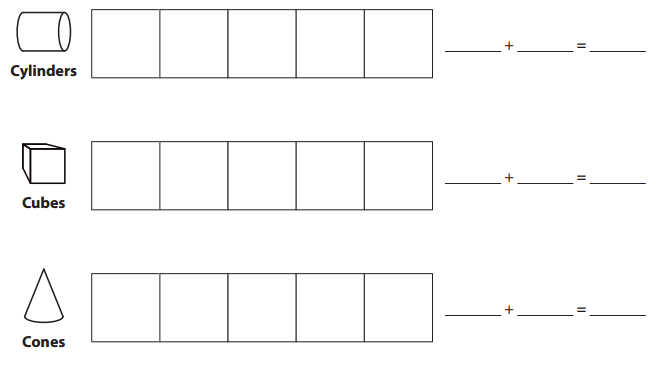
Answer:

Explanation:
In Cylinders first three boxes are colored with one color and rest of the two boxes are colored with another color. So, the equation is 3 + 2 = 5.
In cubes first two boxes are colored with one color and rest of the three boxes are colored with another color. So, the equation is 2 + 3 = 5.
In cones first one box is colored with one color and rest of the four boxes are colored with another color. So, the equation is 1 + 4 = 5.
Player 2
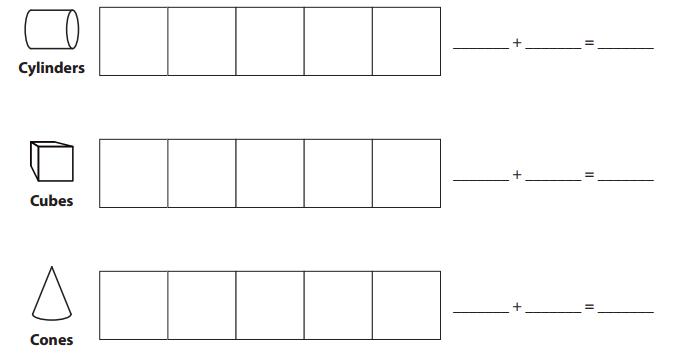
Answer:

Explanation:
In Cylinders first two boxes are colored with one color and rest of the three boxes are colored with another color. So, the equation is 2 + 3 = 5.
In cubes first three boxes are colored with one color and rest of the two boxes are colored with another color. So, the equation is 3 + 2 = 5.
In cones first four boxes are colored with one color and rest of the one box are colored with another color. So, the equation is 4 + 1 = 5.
Add (+) or subtract (-). Use counters or five-frames, or draw pictures if you wish.
Question 1.
Solve each addition (+) and subtraction (-) problem.

Answer:

Explanation:
Perform addition and subtraction operation on above given numbers.
Subtract 2 from 5 the difference is equal to 3.
Add 5 with 0 the sum is 5.
Subtract 5 from 5 the difference is equal to 0.
Add 3 with 2 the sum is 5.
Add 4 with 1 the sum is 5.
Subtract 0 from 5 the difference is equal to 5.
Question 2.
Complete each equation.
5 + 0 = ______________
______________ = 5 – 1
2 + 3 = ______________
5 – 2 = ______________
______________ = 5 – 3
4 + 1 = ______________
5 – 4 = ______________
1 + 4 = ______________
Answer:
5 + 0 = 5
4 = 5 – 1
2 + 3 = 5
5 – 2 = 3
2 = 5 – 3
4 + 1 = 5
5 – 4 = 1
1 + 4 = 5
Explanation:
Perform addition and subtraction operation on above given equation.
Add 5 with 0 the sum is equal to 5.
Subtract 1 from 5 the difference is equal to 4.
Add 2 with 3 the sum is equal to 5.
Subtract 2 from 5 the difference is equal to 3.
Subtract 3 from 5 the difference is equal to 2.
Add 4 with 1 the sum is 5.
Subtract 4 from 5 the difference is equal to 1.
Add 1 with 4 the sum is equal to 5.
Question 3.
CHALLENGE Complete each equation.
5 + ______________ = 8
5 + ______________ = 10
10 = 6 + ______________
5 + ______________ = 7
Answer:
5 + 3 = 8
5 + 5 = 10
10 = 6 + 4
5 + 2 = 7
Explanation:
Perform addition operation on above given equations.
To get the sum 8 we need to add 3 to the 5.
To get the sum 10 we need to add 5 to the 5.
To get the sum10 we need to add 4 to the 6.
To get the sum 7 we need to add 2 to the 5.
Bridges in Mathematics Kindergarten Home Connections Unit 7 Module 2 Session 5 Answer Key
Combinations to Ten
Note to Families
Students have been using ten-frames to help learn the number combinations to 10.
Draw a line from each ten-frame to the matching equation.
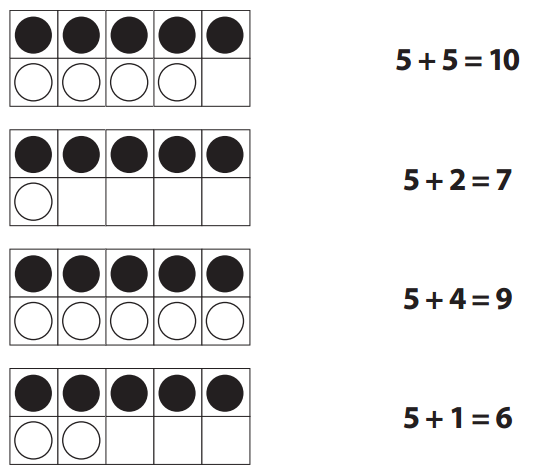
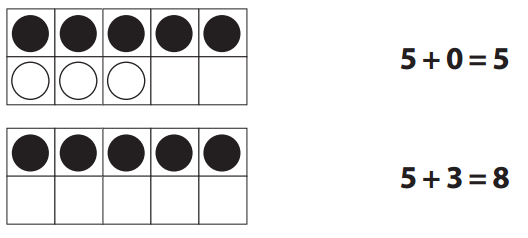
Answer:


Explanation:
A line is drawn from each ten-frame to the matching equation as we can observe in the above image.
Write an equation for each ten-frame. The first one has been done for you.
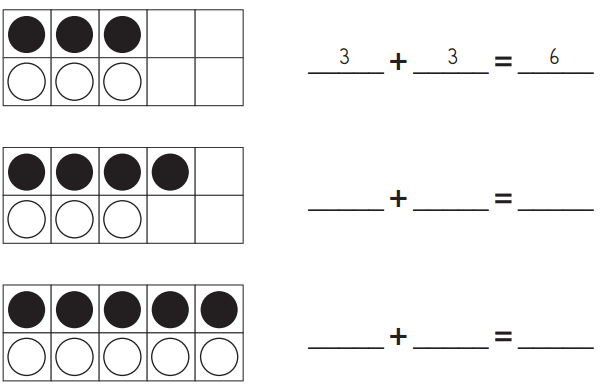
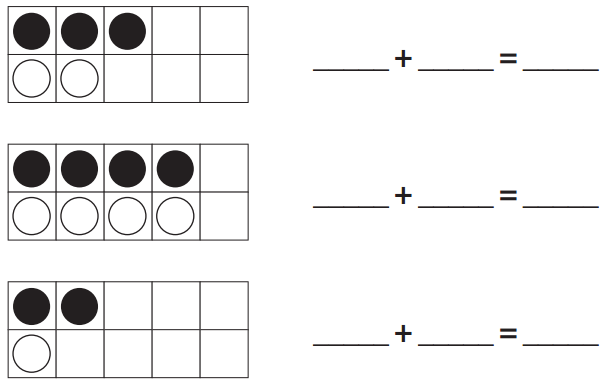
Answer:


Explanation:
Equations are written for each ten-frame as we can observe in the above image.
Bridges in Mathematics Kindergarten Home Connections Unit 7 Module 3 Session 2 Answer Key
Capacity Investigations
Note to Families
You will need to have the four containers for this activity cleaned and ready ahead of time. Help your child find them or ask neighbors or relatives if they have some. You may need to read the story problems on the Add & Subtract worksheet for your child.
Materials
- Capacity Investigations,
- 4 containers similar to the ones pictured at the bottom of page 3
- a \(\frac{1}{2}\) cup measure
- scissors and glue
Instructions
1. Look at the pictures on the right side of the record sheet on page 3.
2. Do you have some containers that look like this in your refrigerator or in the cupboard? After the food or drink is used, rinse four containers and save them.
3. When you have your four containers, cut out the matching pictures and glue them in the boxes on the left of the record sheet (page 3).
4. For your first container, fill the \(\frac{1}{2}\) cup measure to the top and pour it in. Do it again until the container is full, counting each \(\frac{1}{2}\) cup.
5. How many \(\frac{1}{2}\) cups did you use to fill the container? Write the number next to the picture. (You may need an adult to write the numbers if you are getting too wet.)
6. Do it again for the other three containers. Before you start, estimate (use your best guess) how many \(\frac{1}{2}\) cup measures it will take.
7. CHALLENGE Do the activity again with one or more of the containers, using a 1-cup measure. First determine how many \(\frac{1}{2}\) cups it takes to fill the full cup. Look at the worksheet to see how many \(\frac{1}{2}\) cups it took to fill the container, and estimate how many 1-cup measures it will take.
8. Complete the worksheet on page 2 and return it to your teacher.
Question 1.
Add (+) or subtract (-). Use counters or draw pictures if you wish.
5 + 3 = _____________
_______________ = 4 + 4
7 + 2 = _____________
8 – 2 = ______________
10 – 5 = ______________
_____________ = 6 – 3
Answer:
5 + 3 = 8
8 = 4 + 4
7 + 2 = 9
8 – 2 = 6
10 – 5 = 5
3 = 6 – 3
Explanation:
Perform addition and subtraction operation on above given equations.
Add 5 with 3 the sum is equal to 8.
Add 4 with 4 the sum is equal to 8.
Add 7 with 2 the sum is equal to 9.
Subtract 2 from 8 the difference is equal to 6.
Subtract 5 from 10 the difference is equal to 5.
Subtract 3 from 6 the difference is equal to 3.
Question 2.
Read the story problems and find out how many.
a. Katy poured 5 cups of water into the aquarium. The water wasn’t high enough so she added 4 more cups.
How many cups of water in all? _____________
Answer:
Katy poured 5 cups of water into the aquarium.
The water wasn’t high enough, so she added 4 more cups.
Add 5 cups with 4 cups the sum is equal to 9 cups.
5 + 4 = 9
Total 9 cups of water.
b. Aaron put 2 cups of water in his water bottle. Then he added 2 more cups.
How many cups of water in all? _____________
Answer:
Aaron put 2 cups of water in his water bottle.
He added 2 more cups.
Add 2 cups with 2 cups the sum is equal to 4 cups.
2 + 2 = 4
Total 4 cups of water.
c. The pitcher of juice had 10 cups in it this morning. Marla’s family drank 6 cups of juice.
How many cups of juice are left? _______________
Answer:
The pitcher of juice had 10 cups in it this morning.
Marla’s family drank 6 cups of juice.
Subtract 6 cups from 10 cups the difference is 4 cups.
10 – 6 = 4
So, 4 cups of juice are left.
d. Darren put 6 cups of water in his dog’s water bowl. The dog drank 4 cups of the water.
How many cups of water are left? _______________
Answer:
Darren put 6 cups of water in his dog’s water bowl.
The dog drank 4 cups of the water.
Subtract 4 cups from 6 cups the difference is equal to 2 cups.
6 – 4 = 2
So, 2 cups of water are left.
How many half-cups does each container hold?
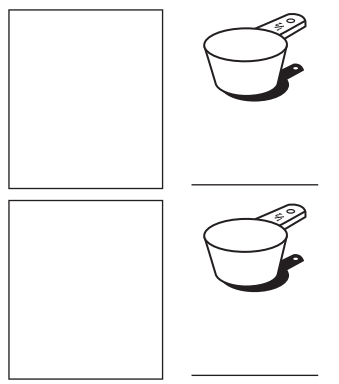

Answer:
Find 4 containers in your home similar to those below. Cut around the 4 boxes that picture the containers you’ll use for your measuring. Glue them in the boxes to the left.

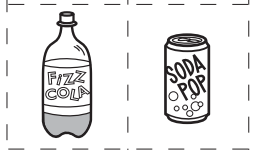
Answer:
Bridges in Mathematics Kindergarten Home Connections Unit 7 Module 3 Session 5 Answer Key
Trains of Ten & Equations
Note to Families
Students have been working with trains of 10 Unifix cubes to learn the combinations of 10 (1 + 9 = 10, 2 + 8 = 10, and so on). We have been using the Unifix cubes to help write equations for each combination of 10.
Materials
- crayons of two different colors
- pencil
Instructions
1. Use two different crayons to color in each train with different combinations of 10. On the line below each train, write an equation for that combination of 10. The first one has been done for you as an example.

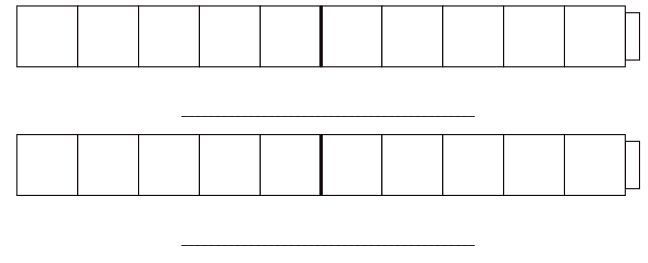
Answer:
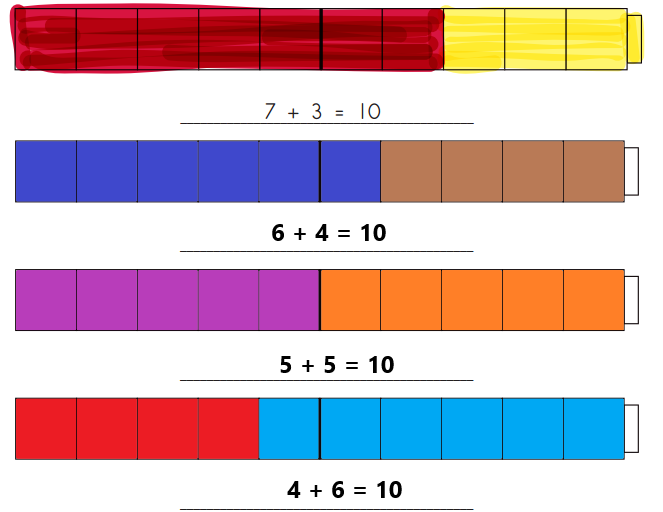

Explanation:
In the above image we can observe two different crayons to color each train with different combinations of 10. The equations are also written for those different combinations of 10.
Question 2.
Add (+) or subtract (-). Use counters or ten-frames, or draw pictures if you wish.

5 + 1 = ______________
5 + 3 = ______________
____________ = 5 + 2
5 + 4 = ______________
5 + 5 = ______________
8 = 5 + ______________
5 + ______________ = 6
Answer:

5 + 1 = 6
5 + 3 = 8
7 = 5 + 2
5 + 4 = 9
5 + 5 = 10
8 = 5 + 3
5 + 1 = 6
Explanation:
Perform addition and subtraction operation on above given numbers.
Subtract 2 from 5 the difference is equal to 3.
Add 2 with 3 the sum is 5.
Add 5 with 0 the sum is 5.
Subtract 1 from 5 the difference is equal to 4.
Subtract 3 from 5 the difference is equal to 2.
Add 1 with 4 the sum is 5.
Subtract 0 from 5 the difference is equal to 5.
Perform addition and subtraction operation on above given equations.
Add 5 with 1 the sum is equal to 6.
Add 5 with 3 the sum is equal to 8.
Add 5 with 2 the sum is equal to 7.
Add 5 with 4 the sum is equal to 9.
Add 5 with 5 the sum is equal to 10.
To get the sum 8 add 3 with 5.
To get the sum 6 add 1 with 5.
CHALLENGE
10 = ______________ + 2
7 + ______________ = 10
6 = 10 – ______________
10 – 5 = ______________
Answer:
10 = 8 + 2
7 + 3 = 10
6 = 10 – 4
10 – 5 = 5
Explanation:
Perform addition and subtraction operation on above given equations.
To get the sum 10 add 8 with 2.
To get the sum 10 add 3 with 7.
To get the difference 6 subtract 4 from 10.
Subtract 5 from 10 the difference is 5.
Question 3.
Write three of your own equations.
Answer:
4 + 4 = 8
7 + 2 = 9
8 – 3 = 5
Bridges in Mathematics Kindergarten Home Connections Unit 7 Module 4 Session 2 Answer Key
Double Ten-Frames
Note to Families
Encourage your student to think “10 and some more” instead of counting all the dots one by one. Ask questions like: How many black dots are there? How many white dots? How many in all? or How many black dots? How many gray dots? How do you know?
Question 1.
How many dots are in each double ten-frame? Write an equation that describes the dots in each one. Circle the double ten-frame that has more.
a.

Answer:

Explanation:
In first double frame there are 15 dots. The equation that describes the given dots is 10 + 5 = 15.
In second double frame there are 16 dots. The equation that describes the given dots is 10 + 6 = 16.
So, drawn a circle to the second double ten-frame because it has more dots.
b.

Answer:

Explanation:
In first double frame there are 13 dots. The equation that describes the given dots is 8 + 5 = 13.
In second double frame there are 12 dots. The equation that describes the given dots is 10 + 2 = 12.
So, drawn a circle to the first double ten-frame because it has more dots.
c.

Answer:

Explanation:
In first double frame there are 15 dots. The equation that describes the given dots is 10 + 5 = 15.
In second double frame there are 14 dots. The equation that describes the given dots is 9 + 5 = 14.
So, drawn a circle to the first double ten-frame because it has more dots.
d.

Answer:

Explanation:
In first double frame there are 19 dots. The equation that describes the given dots is 10 + 9 = 19.
In second double frame there are 18 dots. The equation that describes the given dots is 10 + 8 = 18.
So, drawn a circle to the first double ten-frame because it has more dots.
e.

Answer:

Explanation:
In first double frame there are 13 dots. The equation that describes the given dots is 10 + 3 = 13.
In second double frame there are 12 dots. The equation that describes the given dots is 7 + 5 = 12.
So, drawn a circle to the first double ten-frame because it has more dots.
Add (+) or subtract (-). Use cubes, counters, double ten-frames, or draw pictures if you wish.
Question 2.
Solve each problem.

Answer:

Explanation:
Perform addition and subtraction operation on above given numbers.
Add 2 with 3 the sum is 5.
Add 3 with 2 the sum is 5.
Add 1 with 4 the sum is 5.
Subtract 3 from 5 the difference is equal to 2.
Subtract 1 from 5 the difference is equal to 4.
Subtract 0 from 5 the difference is equal to 5.
Question 3.
Complete each equation.
10 + 1 = ______________
10 + 2 = ______________
10 + 3 = ______________
10 + 5 = ______________
10 + 6 = ______________
10 + 4 = ______________
Answer:
10 + 1 = 11
10 + 2 = 12
10 + 3 = 13
10 + 5 = 15
10 + 6 = 16
10 + 4 = 14
Explanation:
Perform addition operation on above given equations.
Add 10 with 1 the sum is equal to 11.
Add 10 with 2 the sum is equal to 12.
Add 10 with 3 the sum is equal to 13.
Add 10 with 5 the sum is equal to 15.
Add 10 with 6 the sum is equal to 16.
Add 10 with 4 the sum is equal to 14.
Question 4.
CHALLENGE Complete each equation.
11 – 1 = ______________
15 – 5 = ______________
20 – 10 = ______________
19 – 9 = ______________
Answer:
11 – 1 = 10
15 – 5 = 10
20 – 10 = 10
19 – 9 = 10
Explanation:
Perform subtraction operation on above given equations.
Subtract 1 from 11 the difference is equal to 10.
Subtract 5 from 15 the difference is equal to 10.
Subtract 10 from 20 the difference is equal to 10.
Subtract 9 from 19 the difference is equal to 10.
Bridges in Mathematics Kindergarten Home Connections Unit 7 Module 4 Session 5 Answer Key
Tens & Ones
Note to Families
Students have been working on counting 10s and 1s in school. Help your child count the bundles of 10 or groups of 10 first, next count the 1s, and then find out how many in all.
Question 1.
For each picture, fill in the blanks to tell how many 10s and how many 1s. Then, write the number in the box that tells how many in all.
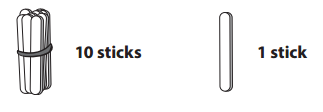
a.

_____________ 10s and _____________ 1s
Answer:
There are two 10s and zero 1s.
Total number of sticks are 20.
b.
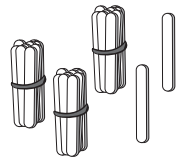
_____________ 10s and _____________ 1s
Answer:
There are three 10s and two 1s.
Total number of sticks are 30 + 2 = 32.
c.

_____________ 10s and _____________ 1s
Answer:
There are one 10s and five 1s.
Total number of dots are 10 + 5 = 15.
d.

_____________ 10s and _____________ 1s
Answer:
There are one 10s and nine 1s.
Total number of dots are 10 + 9 = 19.
e.

_____________ 10s and _____________ 1s
Answer:
There are five 10s and three 1s.
Total number of sticks are 50 + 3 = 53.
Combinations to Five
Add (+) or subtract (-). Use counters or ten-frames, or draw pictures if you wish.
Question 2.
Solve each addition or subtraction problem.

Answer:

Explanation:
Perform addition and subtraction operation on above given numbers.
Add 4 with 1 the sum is 5.
Add 2 with 2 the sum is 4.
Add 3 with 2 the sum is 5.
Subtract 2 from 5 the difference is equal to 3.
Subtract 3 from 4 the difference is equal to 1.
Subtract 4 from 5 the difference is equal to 1.
Question 3.
Complete each equation.
5 + 0 = ____________
4 + ____________ = 5
____________ = 1 + 4
0 + ____________ = 3
3 + ____________ = 4
5 = ____________ + 3
5 – 2 = ____________
4 = 5 – ____________
Answer:
5 + 0 = 5
4 + 1 = 5
5 = 1 + 4
0 + 3 = 3
3 + 1 = 4
5 = 2 + 3
5 – 2 = 3
4 = 5 – 1
Explanation:
Perform addition and subtraction operation on above given equations.
Add 5 with 0 the sum is equal to 5.
To get the sum 5 add 1 with 4.
Add 1 with 4 the sum is equal to 5.
To get the sum 3 add 0 with 3.
To get the sum 4 add 3 with 1.
To get the sum 5 add 2 with 3.
Subtract 2 from 5 the difference is equal to 3.
To get the difference 4 subtract 1 from 5.
Question 4.
CHALLENGE Complete each equation.
4 + 6 = ____________
7 + ____________ = 10
10 – 1 = ____________
10 – ____________ = 8
Answer:
4 + 6 = 10
7 + 3 = 10
10 – 1 = 9
10 – 2 = 8
Explanation:
Perform addition and subtraction operation on above given equations.
Add 4 with 6 the sum is equal to 10.
To get the sum 10 add 3 with 7.
Subtract 1 from 10 the difference is equal to 9.
To get the difference 8 subtract 2 from 10.